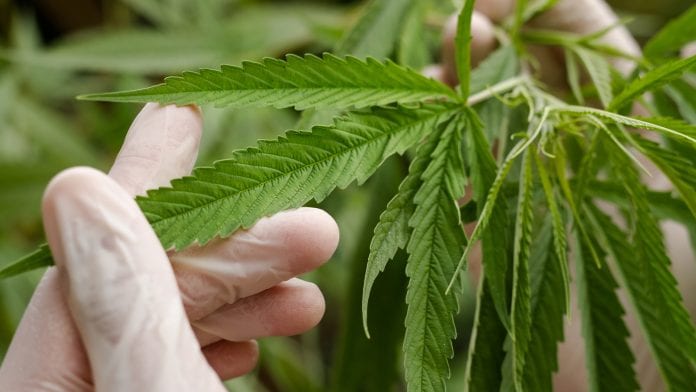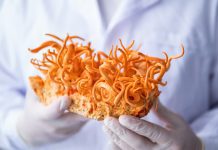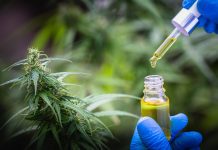
Professor David Finn of the National University of Ireland Galway discusses the use of cannabinoids in the treatment of pain.
In March, Medical Cannabis Network travelled to Dublin, Ireland, to act as a media partner for the Europe Canna Expo (ECE), which saw leading international experts presenting on cannabis business, science, cultivation, and patient care and access, giving an understanding of the current state of play of the CBD and medical cannabis industry globally. At the event we met with Professor David Finn, Professor of Pharmacology and Therapeutics at the National University of Ireland Galway’s Centre for Pain Research, Principle Investigator in the Science Foundation Ireland funded research centres CÚRAM and FutureNeuro, and President of the International Cannabinoid Research Society, to discuss issues around the use of cannabinoids for the treatment of pain, as well as other areas such as patient access.
What are the key benefits of medical cannabis in the treatment of pain?
Based on preclinical research there is now a strong body of evidence to suggest that cannabinoids are antinociceptive in animal models for various types of chronic or acute pain. However, when it comes to clinical evidence, we are lagging behind a little. Although there is a body of evidence from some 35 to 45 published randomised controlled trials (RCTs) investigating the effects of cannabinoids, cannabis or cannabis-based medicines in patients with acute or chronic pain (most of these trials have focused predominantly on neuropathic pain, and to a lesser degree other types of pain, such as that associated with cancer, for instance). Other forms of evidence beyond RCTs are also available. Overall, we have something of a mixed body of evidence – some might say a controversial body of evidence – and not everybody agrees on the final conclusions.
My perception is that there is a modest amount of positive evidence in favour of cannabinoids for neuropathic pain now; and while that is coming mostly from studies that are relatively small in size and have a short duration, nonetheless they tend to show a positive effect on pain. We now need to look at things on a larger scale, to do more RCTs and other types of clinical trial of longer duration and larger sample size. We should also study and learn as much as possible from additional sources, for example large population health-based studies and experience from clinical practice.
I would also support the recommendation of the European Pain Federation Task Force on Cannabinoids and Pain, which was that cannabinoids or cannabis-based medicines could be considered as third line (and preferably adjunctive) medical treatments for neuropathic pain, and as an individual therapeutic trial for other pain conditions. That means that if patients are refractory to guideline-recommended first- and second-line medications that have been tried and failed, or if the side effects of those other medications are unacceptably high, which is often the case, then there could be a basis for trying cannabis-based medicines. However, it is very important to select the right type of patients when doing this – not only patients who have been refractory to other treatments, but also who have been screened for susceptibility to psychosis, schizophrenia, substance misuse, and so on.
What are the risks associated with a largely unregulated CBD industry?
The risks are that patients don’t know with any real certainty what they are taking, and doctors don’t know with a clear degree of certainty what is in these products; and those things are real barriers to prescribing because while some doctors may be open to considering prescribing CBD or cannabinoids generally, they don’t know what to prescribe or where to start. At same time, there are now a lot of products on the market and studies have been carried out to show that they don’t always contain the concentrations of CBD that they claim.
It is important to see CBD as a drug: if anyone needed any proof of that then they would just need to look at the fact that the FDA in the USA approved it in the form of Epidiolex a couple of years ago. CBD is a drug, despite how others may like to think of it, and we must treat it that way. It has a complex pharmacology which we don’t yet fully understand either in terms of pharmacodynamics and how it works and what receptors it works on, but also in terms of pharmacokinetics and how it impacts on liver enzymes and the metabolism of other drugs. I think it’s incumbent on us and on the industry to be regulated and have the highest quality standards that are in line with those of any other drug.
What should consumers look for to ensure a brand or product is good quality and does not contain any unlisted ingredients? Should they just be looking for medical grade pharmaceutical products?
That would be the ideal: medical grade products that have been through the process that all other drugs go through – Phases 1, 2 and 3 trials before being approved by a regulatory authority like the FDA in the US or HPRA in Ireland. But the reality is that this is quite complex and challenging, because we are not dealing with a single molecule most of the time with these products; we are dealing with a plant or plant extracts. which are complex mixtures of many hundreds of different molecules, and regulatory authorities can find that very difficult to deal with.
In that context, it has proven very difficult to get regulatory approval or even an openness by regulatory authorities to consider these products. Thus, in the absence of that, you have to think about what the next best thing is, and I suppose it is for there to be some independent oversight and unbiased testing of these products so that doctors and patients can have confidence in them. We therefore need independent laboratories to test these products and determine what is or is not in them – and that is everything from the amount of active ingredient that is being claimed to their impurities and contaminants such as pesticides, herbicides, and fertilisers. This is vital.
Would you agree that an additional challenge facing clinicians who want to prescribe medical cannabis products is a lack of knowledge about the products and so there is a clear need for more education for doctors?
There are perhaps two main reasons as to why prescriptions aren’t being made, and a lack of education is one. But the other is that the clinicians are still not totally convinced about the evidence base, particularly for some of the more complex conditions like chronic pain and psychiatric or neurological disorders. A part of that, of course, may be related to education because it takes time to become familiar with the literature in what is quite a complex area, and the pain literature is very nuanced and complex. You need to take the time to really look at it, and when you do that you find that it is not black and white; it is very nuanced.
Often the systematic reviews that are carried out pool very disparate studies together which can mean that the signals that are there get lost in the noise. People will just read the final few sentences of the abstract and not look at the actual data. So it is education, but it is also the evidence base, and the fact that it’s complex, and it is trying to communicate that to clinicians and trying to be objective and evidence-based and unbiased in doing that, which is where academics can have a role to play. I also think that it is about generating more evidence of a higher quality as well.
Indeed, often people will say that there is poor quality evidence for the efficacy of cannabinoids in one condition or another. But that does not necessarily mean that that the drugs aren’t working. Rather, it means that the quality of the evidence is poor, and that can be in relation to the way in which the studies were done, for instance, in that they may not have been properly controlled, or there was a design flaw, or they were too small. It is a statement about the evidence and not about the drug. But that message can get lost, too.
How should healthcare policy evolve to meet the needs of patients who may benefit from increased access to medical cannabis?
From my point of view as a pharmacologist, I believe that there should be an openness to considering facilitating cannabinoid medications and medicinal cannabis for the right type of patient for the right type of disorder (i.e. disorders for which there is supporting evidence). To some extent in countries around the world that is happening; countries do to try to learn from each other, and so Europe should perhaps try and learn from the experiences in Canada and the USA: we should look at what worked well and what didn’t. And then we can go on to apply best practice. Ultimately you need a policy that makes medicines that have proven efficacy available to patients, if indeed they have worked for the right type of patient – but we also need to keep people safe.
Is there a need for more basic science research?
It is incredibly important that we continue to support good, high quality, basic science research in this area. We should continue with grant funding, government funding, and industry funding, as this is going to be the fundamental bedrock in building the evidence base and understanding more about the endogenous cannabinoid system as well as more about the phytocannabinoids in the plant, most of which are poorly understood. Basic science research lays the foundation for later clinical translation and clinical trials.
Do you have any hopes for European funding, perhaps via Horizon Europe, being made available for this?
Yes, that is one possible away to support the basic research that is needed. There is a strong interest in cannabinoids and the endocannabinoid system across Europe, and I don’t see any reason why we couldn’t be competitive for European funding in this area.
Professor David Finn
Professor of Pharmacology and Therapeutics
Centre for Pain Research
National University of Ireland Galway
This article appeared in the second issue of Medical Cannabis Network which is out now. Click here to get your free subscription today.









